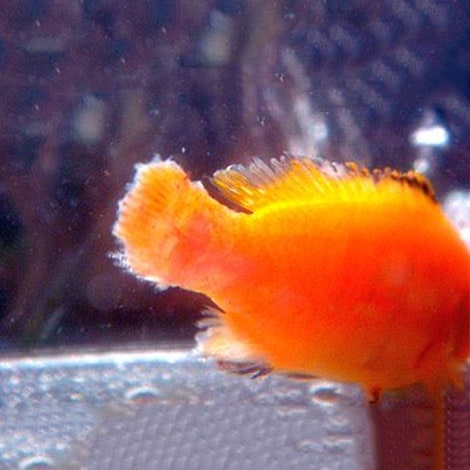Asked By: Rita of Caney, KS
A: Inflamed, red patched on its fins … faded color on its fin tips … frayed, decaying tissue around its mouth or fins … yep, it sounds like your fish pals are fighting fin rot.
One of the most common and preventable diseases in pond and aquarium fish, fish rot typically starts around the edges of the fins and gradually destroys more tissue until it reaches the fin base. It also can
make a fish lethargic, lose its appetite and, depending on the disease's severity, spread to other areas of its body.
If caught early, however, fin rot can be cured. Here's what you need to know about its cause, treatment and prevention.
Causes of Fin Rot
Fin rot is caused by several different types of bacteria, including Aeromonas, Psudomonas and Vibrio, that eat the delicate membranes of the fish's fin, leaving behind the fin rays. The frayed, damaged tissue is then susceptible to secondary fungal infections, which exacerbate the sickness.
The root cause of fin rot can most often be traced to its environment. Poor water quality, low oxygen levels and overcrowding set up a perfect situation for bacterial overgrowth and disease proliferation. Fish with compromised immune systems living in that type of environment is particularly vulnerable to fin rot.
Treating Sick Fish
To treat the sick fish, start by moving it into
a separate holding tank. Give it an anti-bacterial treatment, such as
CrystalClear WipeOut, that's formulated to prevent and control fin rot. Be sure to add plenty of aeration and circulation to the water, as well as some Stress Reducer Plus or Pond Salt (1 teaspoon per 5 gallons of water) to soothe its stress and help it recover faster.
Eliminate the bacterial threat from your pond by improving water quality. First, test your water for ammonia, high nitrates and high nitrites, and check the pH level, and correct as necessary. Then clean out any decaying plant matter from the pond with
net or vacuum, check and clean your filter and skimmer, and do a 20 to 50 percent water change. Make sure your aeration system is working properly and, if possible, crank it up. Once water conditions have improved, you should begin to see your fish's fins regenerate. Depending on the degree of fin rot, it can take several weeks to several months for the fins to look normal again, however some scarring or discoloration may occur.
Preventing Fin Rot
With a few preventive measures, you can keep your pond fin-rot free. We recommend this three-step approach:
- Evaluate Your Pond: Take an honest look at your setup. Do you have sufficient filtration and aeration? Are there too many fish in your pond? Do you (or family members) feed them too often, causing poor water quality? Improve equipment where needed. Find new homes for aggressive or overabundant fish. And try to limit mealtime to once a day.
- Maintain Water Quality with Natural Bacteria: The microscopic beneficial bacteria found in DefensePAC Pond Care Packages will help break down excess waste, uneaten food and decomposing organics. When used as directed, you'll see improved water quality and clarity – and happy, well fish.
- Aerate and Circulate: Air pumped through an aerator boosts oxygen levels in your pond, which is very good for fish and their overall wellness. If you have a waterfall, consider adding a small aerator, like our Pond Aerators, at the other end of your pond.
Though your fish are showing signs of fin rot, you can help them recover with quarantine, treatment and regular pond maintenance. Good luck!
Last Updated: February 1, 2023

